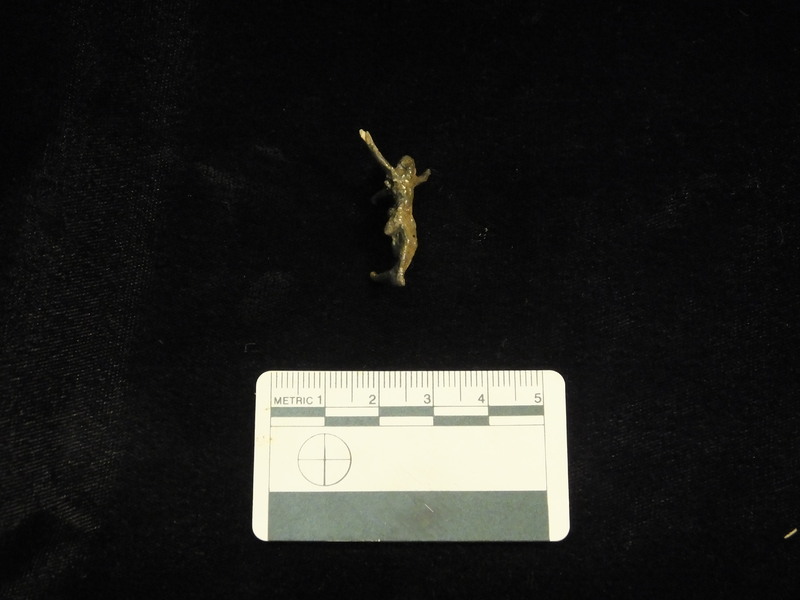Crucifix from French Colonial post-in-ground structure.
This file appears in: Fur Traders, Indigenous Peoples, and the Violence of Urban Slavery
An assemblage like this potentially shows the closeness of indigenous populations and the enslaved in Colonial New Orleans. In fact, they could be one and the same: a 1726 Louisiana census lists over 200 enslaved Indians and around 1500 enslaved Africans. The enslavement of Native Americans would not be prohibited until the Spanish era, and even then it seems that those of mixed heritage were simply reclassified as Black rather than Indian to justify their continued bondage. These interconnections helped enslaved men like Guy escape into maroonage in the surrounding wilderness in Colonial New Orleans, and they are memorialized in traditions like the Mardi Gras Indians of New Orleans today.
This file appears in: Fur Traders, Indigenous Peoples, and the Violence of Urban Slavery
Fur Traders, Indigenous Peoples, and the Violence of Urban Slavery
Very few well-preserved archaeological sites dating from the French Colonial era have been excavated in New Orleans. As most of these are located in areas that have been developed continuously since the early eighteenth century, many are disturbed…
